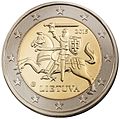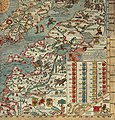Portal:Lithuania
Welcome to the Lithuania Portal — Sveiki atvykę į Lietuvos Portalą
Lithuania (/ˌlɪθjuˈeɪniə/ LITH-ew-AY-nee-ə; Lithuanian: Lietuva [lʲiətʊˈvɐ]), officially the Republic of Lithuania (Lithuanian: Lietuvos Respublika [lʲiətʊˈvoːs rʲɛsˈpʊblʲɪkɐ]), is a country in the Baltic region of Europe. It is one of three Baltic states and lies on the eastern shore of the Baltic Sea, bordered by Latvia to the north, Belarus to the east and south, Poland to the south, and the Russian semi-exclave of Kaliningrad Oblast to the southwest, with a maritime border with Sweden to the west. Lithuania covers an area of 65,300 km2 (25,200 sq mi), with a population of 2.88 million. Its capital and largest city is Vilnius. Other major cities are Kaunas, Klaipėda, Šiauliai and Panevėžys. Lithuanians belong to the ethnolinguistic group of the Balts and speak Lithuanian.
For millennia, the southeastern shores of the Baltic Sea were inhabited by various Baltic tribes. In the 1230s, Lithuanian lands were united for the first time by Mindaugas, who formed the Kingdom of Lithuania on 6 July 1253. Subsequent expansion and consolidation resulted in the Grand Duchy of Lithuania, which by the 14th century was the largest country in Europe.
In 1386, the Grand Duchy entered into a de facto personal union with the Crown of the Kingdom of Poland. The two realms were united into the bi-confederal Polish-Lithuanian Commonwealth in 1569, forming one of the largest and most prosperous states in Europe. The Commonwealth lasted more than two centuries, until neighbouring countries gradually dismantled it between 1772 and 1795, with the Russian Empire annexing most of Lithuania's territory. (Full article...)
Selected article -

The United Nations Educational, Scientific and Cultural Organization (UNESCO) designates World Heritage Sites of outstanding universal value to cultural or natural heritage which have been nominated by countries which are signatories to the UNESCO World Heritage Convention, established in 1972. Cultural heritage consists of monuments (such as architectural works, monumental sculptures, or inscriptions), groups of buildings, and sites (including archaeological sites). Natural features (consisting of physical and biological formations), geological and physiographical formations (including habitats of threatened species of animals and plants), and natural sites which are important from the point of view of science, conservation or natural beauty, are defined as natural heritage. Lithuania accepted the convention on 31 March 1992, making its natural and historical sites eligible for inclusion on the list. The first site added to the list was the Vilnius Historic Centre, in 1994. Further sites were added in 2000, 2004, 2005, and 2023. In total, there are five sites on the list, all of them cultural. Two sites are transnational: the Curonian Spit is shared with Russia and the Struve Geodetic Arc is shared with nine other countries. In addition to its World Heritage Sites, Lithuania also maintains one property on its tentative list.
(Full article...)General images
Did you know -

- ...national food Cepelinai is named after the Zeppelins?
- ...AC/DC drummer Phil Rudd is of Lithuanian descent?
- ...Prince Wilhelm of Urach was named as King of Lithuania Mindaugas II just for a few months in 1918?
- ... that Veto, inspired by the history of the Polish–Lithuanian Commonwealth, is considered to be the first Polish collectible card game?
- ... that after being arrested for organizing a general strike in 1920, S. Girinis was sent to the Soviet Union following a Soviet-Lithuanian exchange of political prisoners?
- ... that the Communist Party of Lithuania and Belorussia organized partisan units behind the front lines during the Polish–Soviet War?
Selected images
Topics
Military of Lithuania
| ||||||||||||||
|---|---|---|---|---|---|---|---|---|---|---|---|---|---|---|
|
| Public holidays in Lithuania | |||
|---|---|---|---|
| Date | English name | Local name | Remarks |
| 1 January | New Year's Day | Naujųjų metų diena | |
| 16 February | Day of Restoration of the State of Lithuania (1918) | Lietuvos valstybės atkūrimo diena | |
| 11 March | Day of Restoration of Independence of Lithuania (1990) | Lietuvos nepriklausomybės atkūrimo diena | |
| Moveable Sunday | Easter Sunday | Šv. Velykos | Commemorates resurrection of Jesus. The first Sunday after the full moon that occurs on or soonest after 21 March. |
| The day after Easter Sunday | Easter Monday | Antroji šv. Velykų diena | |
| 1 May | International Workers' Day | Tarptautinė darbo diena | |
| First Sunday in May | Mother's Day | Motinos diena | |
| First Sunday in June | Father's Day | Tėvo diena | |
| 24 June | St. John's Day / Day of Dew | Joninės / Rasos | Celebrated according to mostly pagan traditions (Midsummer Day, Saint Jonas Day). |
| 6 July | Statehood Day | Valstybės (Lietuvos karaliaus Mindaugo karūnavimo) ir Tautiškos giesmės diena | Celebrates the 1253 coronation of Mindaugas, the first King of Lithuania, and the national anthem of Lithuania. |
| 15 August | Assumption Day | Žolinė (Švč. Mergelės Marijos ėmimo į dangų diena) | Also marked according to pagan traditions, celebrating the goddess Žemyna and noting the mid-August as the middle between summer and autumn. |
| 1 November | All Saints' Day | Visų šventųjų diena | Halloween is increasingly popular and is also informally celebrated on the eve (31 October). |
| 2 November | All Souls' Day | Mirusiųjų atminimo (Vėlinių) diena | |
| 24 December | Christmas Eve | Šv. Kūčios | |
| 25 and 26 December | Christmas Day | Šv. Kalėdos | Commemorates birth of Jesus. |
Categories
Recognized content
New articles
Rules | Match log | Results page (for watching) | Last updated: 2024-11-22 21:06 (UTC)
Note: The list display can now be customized by each user. See List display personalization for details.
- Gintautas Bartkus (edit | talk | history | links | watch | logs | tools) by Cilidus (talk · contribs · new pages (54)) started on 2024-11-22, score: 30
- Yi Peng 3 (edit | talk | history | links | watch | logs | tools) by Elios Peredhel (talk · contribs · new pages (1)) started on 2024-11-22, score: 60
- Vladimir (name) (edit | talk | history | links | watch | logs | tools) by 85.249.23.7 (talk · contribs · new pages (1)) started on 2024-11-22, score: 20
- Kęstutis Budrys (edit | talk | history | links | watch | logs | tools) by Cilidus (talk · contribs · new pages (54)) started on 2024-11-22, score: 60
- Liutauras Kazlavickas (edit | talk | history | links | watch | logs | tools) by Cilidus (talk · contribs · new pages (54)) started on 2024-11-21, score: 60
- Nerijus Cesiulis (edit | talk | history | links | watch | logs | tools) by Cilidus (talk · contribs · new pages (54)) started on 2024-11-21, score: 40
- Vyacheslav Bogdanovich (edit | talk | history | links | watch | logs | tools) by KrivisKrivaitis (talk · contribs · new pages (2)) started on 2024-11-21, score: 30
- Paluckas Cabinet (edit | talk | history | links | watch | logs | tools) by Augenis (talk · contribs · new pages (1)) started on 2024-11-21, score: 80
- Fourteenth Seimas (edit | talk | history | links | watch | logs | tools) by GlowstoneUnknown (talk · contribs · new pages (3)) started on 2024-11-21, score: 80
- Paulius Visockas (edit | talk | history | links | watch | logs | tools) by Cilidus (talk · contribs · new pages (54)) started on 2024-11-20, score: 70
- Raimondas Kuodis (edit | talk | history | links | watch | logs | tools) by Cilidus (talk · contribs · new pages (54)) started on 2024-11-20, score: 60
- Bydgoszcz Mint (edit | talk | history | links | watch | logs | tools) by OldPolandUpdates (talk · contribs · new pages (10)) started on 2024-11-19, score: 20
- Wildflower (Billie Eilish song) (edit | talk | history | links | watch | logs | tools) by Lk95 (talk · contribs · new pages (47)) started on 2024-11-20, score: 20
- List of unusual deaths in the 19th century (edit | talk | history | links | watch | logs | tools) by Gildir (talk · contribs · new pages (13)) started on 2024-11-20, score: 40
- BCS East-West Interlink (edit | talk | history | links | watch | logs | tools) by Noble Attempt (talk · contribs · new pages (12)) started on 2024-11-20, score: 70
- 2024 Baltic Sea submarine cable disruptions (edit | talk | history | links | watch | logs | tools) by Noble Attempt (talk · contribs · new pages (12)) started on 2024-11-20, score: 40
- Siege of Giurgiu (1771) (edit | talk | history | links | watch | logs | tools) by Lenovya (talk · contribs · new pages (12)) started on 2024-11-20, score: 20
- Petras Dargis (edit | talk | history | links | watch | logs | tools) by Cilidus (talk · contribs · new pages (54)) started on 2024-11-19, score: 40
- Vytautas Pikturna (edit | talk | history | links | watch | logs | tools) by Fruimini (talk · contribs · new pages (1)) started on 2024-11-19, score: 80
- Jews in the Polish Army (edit | talk | history | links | watch | logs | tools) by Piotrus (talk · contribs · new pages (10)) started on 2024-11-19, score: 20
- Vytautas Jucius (edit | talk | history | links | watch | logs | tools) by Cilidus (talk · contribs · new pages (54)) started on 2024-11-19, score: 40
- LTV7 (edit | talk | history | links | watch | logs | tools) by RandomMe98 (talk · contribs · new pages (33)) started on 2024-11-19, score: 20
- Kęstutis Bilius (edit | talk | history | links | watch | logs | tools) by Cilidus (talk · contribs · new pages (54)) started on 2024-11-18, score: 50
- Audronė Galvonaitė (edit | talk | history | links | watch | logs | tools) by AMM Pittsburgh (talk · contribs · new pages (7)) started on 2024-11-18, score: 40
- Daiva Petkevičienė (edit | talk | history | links | watch | logs | tools) by Cilidus (talk · contribs · new pages (54)) started on 2024-11-18, score: 40
- Dainoras Bradauskas (edit | talk | history | links | watch | logs | tools) by Cilidus (talk · contribs · new pages (54)) started on 2024-11-18, score: 40
- Lina Šukytė-Korsakė (edit | talk | history | links | watch | logs | tools) by Cilidus (talk · contribs · new pages (54)) started on 2024-11-18, score: 70
- Dainius Varnas (edit | talk | history | links | watch | logs | tools) by Cilidus (talk · contribs · new pages (54)) started on 2024-11-18, score: 60
- Tomas Domarkas (edit | talk | history | links | watch | logs | tools) by Cilidus (talk · contribs · new pages (54)) started on 2024-11-18, score: 40
- Mantas Poškus (edit | talk | history | links | watch | logs | tools) by Cilidus (talk · contribs · new pages (54)) started on 2024-11-17, score: 40
- 2022 EU-Western Balkans summit (edit | talk | history | links | watch | logs | tools) by Iaof2017 (talk · contribs · new pages (5)) started on 2024-11-17, score: 30
- 2024–25 Women's EHF European League qualification round (edit | talk | history | links | watch | logs | tools) by ILoveSport2006 (talk · contribs · new pages (5)) started on 2024-11-17, score: 20
- 2024–25 BC Rytas season (edit | talk | history | links | watch | logs | tools) by Konepe123 (talk · contribs · new pages (1)) started on 2024-11-17, score: 60
- Martynas Gedvilas (edit | talk | history | links | watch | logs | tools) by Cilidus (talk · contribs · new pages (54)) started on 2024-11-17, score: 40
- Lake Rėkyva (edit | talk | history | links | watch | logs | tools) by Pofka (talk · contribs · new pages (5)) started on 2024-11-16, score: 80
- Estonia national football team results (1920–1940) (edit | talk | history | links | watch | logs | tools) by FastCube (talk · contribs · new pages (111)) started on 2024-11-16, score: 50
- Semyon Vasilyevich Konovalov (edit | talk | history | links | watch | logs | tools) by Rogeristiq (talk · contribs · new pages (2)) started on 2024-11-13, score: 30
- Junior Eurovision Song Contest 2025 (edit | talk | history | links | watch | logs | tools) by Mr. Thistle (talk · contribs · new pages (2)) started on 2024-11-09, score: 20
- Robert Puchovič (edit | talk | history | links | watch | logs | tools) by Cilidus (talk · contribs · new pages (54)) started on 2024-11-16, score: 40
- Karolis Neimantas (edit | talk | history | links | watch | logs | tools) by Cilidus (talk · contribs · new pages (54)) started on 2024-11-16, score: 40
- Daniele Girolamo Dolfin (edit | talk | history | links | watch | logs | tools) by Cplakidas (talk · contribs · new pages (5)) started on 2024-11-16, score: 20
- John III Sobieski Monument (Warsaw) (edit | talk | history | links | watch | logs | tools) by Artemis Andromeda (talk · contribs · new pages (28)) started on 2024-11-16, score: 20
- Tadas Sadauskis (edit | talk | history | links | watch | logs | tools) by Cilidus (talk · contribs · new pages (54)) started on 2024-11-15, score: 40
- Daiva Žebelienė (edit | talk | history | links | watch | logs | tools) by Cilidus (talk · contribs · new pages (54)) started on 2024-11-15, score: 50
- Ernestas Gudelevičius (edit | talk | history | links | watch | logs | tools) by Cocô53 (talk · contribs · new pages (1)) started on 2024-11-14, score: 50
- 2024–25 Central Michigan Chippewas men's basketball team (edit | talk | history | links | watch | logs | tools) by Kennyk25 (talk · contribs · new pages (1)) started on 2024-11-14, score: 30
- Artūras Skardžius (edit | talk | history | links | watch | logs | tools) by Cilidus (talk · contribs · new pages (54)) started on 2024-11-14, score: 60
- Saulius Bucevičius (edit | talk | history | links | watch | logs | tools) by Cilidus (talk · contribs · new pages (54)) started on 2024-11-14, score: 40
- Konstantin Pavlovich, Grand Duke of Russia (edit | talk | history | links | watch | logs | tools) by Artemis Andromeda (talk · contribs · new pages (28)) started on 2024-11-14, score: 20
- Agnė Jakavičiūtė-Miliauskienė (edit | talk | history | links | watch | logs | tools) by Cilidus (talk · contribs · new pages (54)) started on 2024-11-14, score: 40
- C/2006 A1 (Pojmański) (edit | talk | history | links | watch | logs | tools) by KyloRen2017 (talk · contribs · new pages (22)) started on 2024-11-14, score: 80
- Battle of the Nations (medieval tournament) (edit | talk | history | links | watch | logs | tools) by BarrelProof (talk · contribs · new pages (18)) started on 2024-11-14, score: 30
- Dagnė Vildžiūnaitė (edit | talk | history | links | watch | logs | tools) by Анатолий Росдашин (talk · contribs · new pages (6)) started on 2024-11-13, score: 60
- Linas Urmanavičius (edit | talk | history | links | watch | logs | tools) by Cilidus (talk · contribs · new pages (54)) started on 2024-11-13, score: 40
- Buynaksk Synagogue (edit | talk | history | links | watch | logs | tools) by Boxes12 (talk · contribs · new pages (9)) started on 2024-11-13, score: 40
- Jekaterina Rojaka (edit | talk | history | links | watch | logs | tools) by Cilidus (talk · contribs · new pages (54)) started on 2024-11-13, score: 40
- 2024–25 VMI Keydets basketball team (edit | talk | history | links | watch | logs | tools) by BullDawg2021 (talk · contribs · new pages (16)) started on 2024-11-13, score: 40
- Tiltas 2024 (edit | talk | history | links | watch | logs | tools) by Nintenga (talk · contribs · new pages (1)) started on 2024-11-12, score: 80
- Rūta Miliūtė (edit | talk | history | links | watch | logs | tools) by Cilidus (talk · contribs · new pages (54)) started on 2024-11-12, score: 60
- LTG Link (edit | talk | history | links | watch | logs | tools) by Officialworks (talk · contribs · new pages (17)) started on 2024-11-12, score: 100
- Robertas Lozinskis (edit | talk | history | links | watch | logs | tools) by Barzinis (talk · contribs · new pages (1)) started on 2024-11-12, score: 90
- Švyturys Camp (edit | talk | history | links | watch | logs | tools) by Arcticocean (talk · contribs · new pages (4)) started on 2024-11-12, score: 60
- Domas Griškevičius (edit | talk | history | links | watch | logs | tools) by Cilidus (talk · contribs · new pages (54)) started on 2024-11-11, score: 60
- Kostas Ostrauskas (edit | talk | history | links | watch | logs | tools) by KrivisKrivaitis (talk · contribs · new pages (2)) started on 2024-11-11, score: 40
- Levi Jerahmeel Klaczko (edit | talk | history | links | watch | logs | tools) by Ploni (talk · contribs · new pages (1)) started on 2024-11-11, score: 40
- Lenino keliu (edit | talk | history | links | watch | logs | tools) by Soman (talk · contribs · new pages (30)) started on 2024-11-10, score: 80
- Jewish refugees from Nazism (edit | talk | history | links | watch | logs | tools) by Boxes12 (talk · contribs · new pages (9)) started on 2024-11-10, score: 40
- 2024–25 Merrimack Warriors men's basketball team (edit | talk | history | links | watch | logs | tools) by RedSox39 (talk · contribs · new pages (29)) started on 2024-11-10, score: 30
- List of populist political parties (edit | talk | history | links | watch | logs | tools) by Rares Kosa (talk · contribs · new pages (3)) started on 2024-11-09, score: 20
- 6th European Political Community Summit (edit | talk | history | links | watch | logs | tools) by Dn9ahx (talk · contribs · new pages (5)) started on 2024-11-08, score: 30
Associated Wikimedia
The following Wikimedia Foundation sister projects provide more on this subject:
-
Commons
Free media repository -
Wikibooks
Free textbooks and manuals -
Wikidata
Free knowledge base -
Wikinews
Free-content news -
Wikiquote
Collection of quotations -
Wikisource
Free-content library -
Wikiversity
Free learning tools -
Wikivoyage
Free travel guide -
Wiktionary
Dictionary and thesaurus





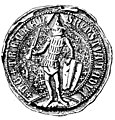

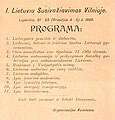


















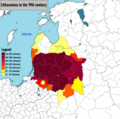

























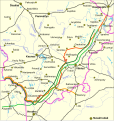













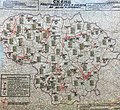



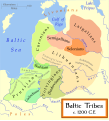
















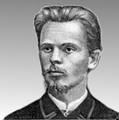



![Image 97The preservation of the Great Seal of Lithuania (pictured, dating to 1623) when concluding the Union of Lublin meant that the elected monarchs acts without being confirmed with the Lithuanian seals were void in Lithuania. These Lithuanian seals were in possession of the Lithuanian Grand Chancellor (Great Seal) and Lithuanian Vice-Chancellor [lt] (Lesser Seal). (from Grand Duchy of Lithuania)](/upwiki/wikipedia/commons/thumb/e/ec/The_Great_Seal_of_Lithuania_%28with_Vytis%29_from_the_reign_of_Sigismund_III_Vasa%2C_1623.png/120px-The_Great_Seal_of_Lithuania_%28with_Vytis%29_from_the_reign_of_Sigismund_III_Vasa%2C_1623.png)























